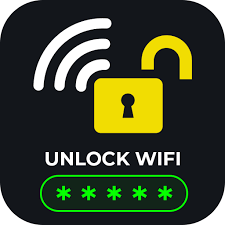In today’s digital age, WiFi is as essential as electricity. We depend on wireless internet for work, education, communication, and entertainment. However, forgetting a WiFi password or needing to reconnect a new device can be frustrating. This is where WiFi password finder tools come into play. These apps or methods help users recover, view, or retrieve saved WiFi passwords from devices or routers.
While these tools serve legitimate purposes, they are often misunderstood or misused. In this article, we’ll explore what a WiFi password finder is, how it works, where it is legal and ethical to use it, and how to use it safely and responsibly.

What Is a WiFi Password Finder?
A WiFi password finder is a software application or system utility that helps users recover or reveal previously connected WiFi passwords. It is primarily used to:
-
Retrieve forgotten passwords on a device that was connected before.
-
View saved WiFi credentials stored in a computer or smartphone.
-
Recover lost access to a router or network without resetting it.
These tools can be found as built-in system features in Windows, macOS, Android (with root), or through third-party apps and command-line tools.
Why Would You Need a WiFi Password Finder?
There are many valid reasons why someone might need a WiFi password finder:
1. Forgotten Passwords
You set up a WiFi network months ago and now need the password for a new device—but can’t remember what it was.
2. Helping Others Connect
You want to share your home or office WiFi with a guest but don’t recall the exact password stored on your laptop or phone.
3. Managing Public or Business Networks
Businesses that regularly change their WiFi passwords may use password finders to audit or retrieve old settings from their systems.
4. Backup Before Router Reset
Before performing a factory reset on a router, you may want to recover and document all saved passwords.
How Do WiFi Password Finders Work?
1. Accessing System-Stored Credentials
When you connect to a WiFi network, your device often stores the network name (SSID) and the password. These credentials can be retrieved using:
-
Windows Command Prompt or PowerShell
Command: -
macOS Terminal
Command: -
Android (Rooted Devices)
Accessing/data/misc/wifi/wpa_supplicant.conffile. -
iOS (Jailbroken)
Using tools like iFile or password manager integrations.
2. Router Admin Panel
If you have access to the router, you can log in via its IP address (e.g., 192.168.0.1 or 192.168.1.1) and view or change the WiFi settings, including the password.
3. Third-Party Tools
There are various apps and software that simplify the process:
-
WirelessKeyView (Windows)
-
WiFi Password Viewer (Android)
-
WiFi Key Recovery (Rooted Android)
These tools extract stored WiFi credentials and present them in a user-friendly format.
Types of WiFi Password Finders
1. System-Based Tools
These are utilities built into your OS or accessible through simple commands or settings.
2. Third-Party Software
Downloaded applications that extract stored credentials or manage saved networks. Most require administrative access.
3. Cloud-Based Password Managers
Some password managers, like LastPass or Bitwarden, allow you to save and retrieve WiFi credentials across devices securely.
Important Use Cases and Scenarios
Home Users
-
Recover passwords for smart TVs, printers, and IoT devices.
-
Help children or elderly family members connect their devices.
IT Professionals
-
Audit and manage network configurations.
-
Retrieve credentials across multiple machines in an enterprise environment.
Travelers
-
Recover saved passwords from laptops or phones while traveling to reconnect with previously used networks.
Students and Remote Workers
-
Switch between multiple WiFi networks (home, office, library) and need quick access to stored credentials.
Risks and Ethical Considerations
While WiFi password finders are legal and ethical when used on your own devices or networks, there are several concerns and potential misuses.
⚠️ Illegal Use
Attempting to access someone else’s WiFi without permission is illegal and unethical. It’s considered hacking and can result in legal penalties.
⚠️ Security Risks
Some third-party apps may contain malware or spyware. Always download from reputable sources and avoid cracked or pirated software.
⚠️ Privacy Breach
If someone gains physical access to your device, they can use a password finder to steal saved credentials, potentially compromising your home or business network.

How to Use a WiFi Password Finder Safely and Responsibly
✅ Only Access Networks You Own or Have Permission To
Never use these tools to break into someone else’s network. Respect privacy and property.
✅ Use Built-In Tools When Possible
Operating systems have safe, legitimate tools to recover saved passwords. Prefer these over downloading external software.
✅ Keep Devices Locked and Encrypted
To prevent unauthorized users from using password finders on your device, set up strong passwords and use full-disk encryption.
✅ Update Software Regularly
Always update your OS and apps to patch vulnerabilities that could be exploited by malicious software.
✅ Use Secure WiFi Settings
If you manage a router, use WPA3 encryption, hide your SSID if needed, and avoid using default passwords.
Top WiFi Password Finder Apps and Tools (2025 Edition)
| Tool Name | Platform | Key Features |
|---|---|---|
| WirelessKeyView | Windows | Recovers saved passwords, simple UI |
| WiFi Password Viewer | Android (Root) | View saved WiFi credentials |
| Keychain Access | macOS | View saved WiFi in secure storage |
| Router Admin Setup Tool | Android/iOS | Access router settings, view password |
| Command Line Tools | Windows/macOS | Native OS support for password recovery |
Alternatives to Finding WiFi Passwords
If you can’t retrieve a password using a finder, consider these alternatives:
1. Reset the Router
Press the reset button (usually for 10 seconds) and reconfigure the network.
2. Contact Network Administrator
In offices or schools, request the password from the IT department or admin.
3. Check Device Labels
Some routers have default credentials printed on the back or bottom.
4. Use QR Code Sharing
On Android, go to WiFi settings, tap the connected network, and share the QR code.
Security Tips for Managing WiFi Networks
-
Change the default password immediately when setting up a new router.
-
Disable WPS (Wi-Fi Protected Setup) to prevent brute-force attacks.
-
Use MAC address filtering to allow only specific devices.
-
Enable guest networks with limited access for visitors.
-
Regularly audit connected devices to spot unauthorized usage.
CLICK HERE TO OPEN

Future of WiFi Access and Password Management
🔐 Passwordless WiFi Access
Technologies like Passpoint and WPA3 are evolving toward seamless authentication using SIM cards or device profiles.
☁️ Cloud-Based Credential Syncing
Services like Google and Apple are expanding automatic WiFi credential syncing across devices with cloud integration.
📡 AI-Based Network Management
AI will help in automatically detecting unauthorized access, optimizing bandwidth, and managing passwords securely.
Conclusion
WiFi password finders are helpful tools that make reconnecting to your networks easier and more efficient. Whether you’re managing a home setup or a corporate IT environment, these tools save time, increase convenience, and ensure you stay connected.
However, with great power comes great responsibility. These tools must be used ethically, legally, and securely. Always remember: retrieving your own credentials is fair; accessing someone else’s without permission is not.
As wireless networks become more integrated into our lives, understanding how to manage, recover, and secure your WiFi passwords will be an essential digital skill.
Read more:https://a.meks.site/wp-admin/post.php?post=62&action=edit